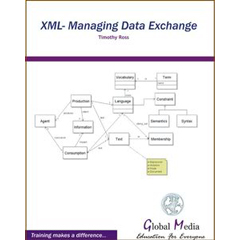 Book Description
Book Description
There are four central problems in data management: capture, storage, retrieval, and exchange. The purpose of this book is to address XML, a technology for managing data exchange. The foundational XML chapters in this book are structured by a 'data model' approach. The first chapter introduces the reader to the XML document, XML schema, and XML stylesheet with a single entity example. Subsequent chapters expand upon the XML basics with multiple-entity examples and a one-to-one relationship, a one-to-many relationship, or a many-to-many relationship. XML is a tool used for data exchange. Data exchange has long been an issue in information technology, but the Internet has elevated its importance.
Electronic data interchange (EDI), the traditional data exchange standard for large organizations, is giving way to XML, which is likely to become the data exchange standard for all organizations, irrespective of size. EDI supports the electronic exchange of standard business documents and is currently the major data format for electronic commerce. A structured format is used to exchange common business documents (e.g., invoices and shipping orders) between trading partners. In contrast to the free form of email messages, EDI supports the exchange of repetitive, routine business transactions. Standards mean that routine electronic transactions can be concise and precise. The main standard used in the United States and Canada is known as X.12, and the major international standard is UN/EDIFACT. Firms adhering to the same standard can share data electronically.
The Internet is a global network potentially accessible by nearly every firm, with communication costs typically less than those of traditional EDI. Consequently, the Internet has become the electronic transport path of choice between trading partners. The simplest approach is to use the Internet as a means of transporting EDI documents. But because EDI was developed in the 1960s, another approach is to reexamine the technology of data exchange. A result of this rethinking is XML, but before considering XML we need to learn about SGML, the parent of XML.
Book Details
- Hardcover: 325 pages
- Publisher: Global Media (2007)
- Language: English
- ISBN-10: 8189940880
- File Size: 6.2 MiB
- Hits: 795 times